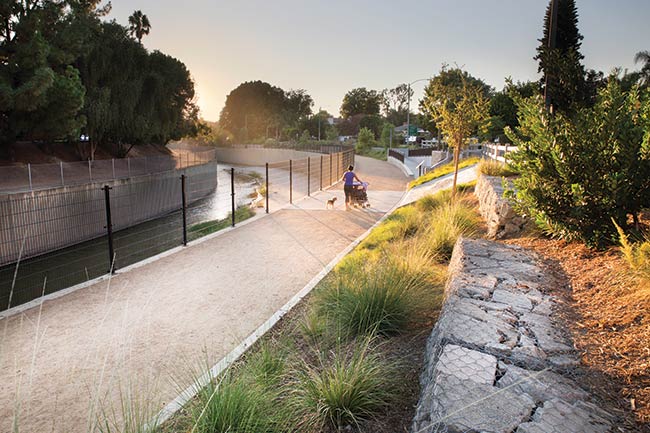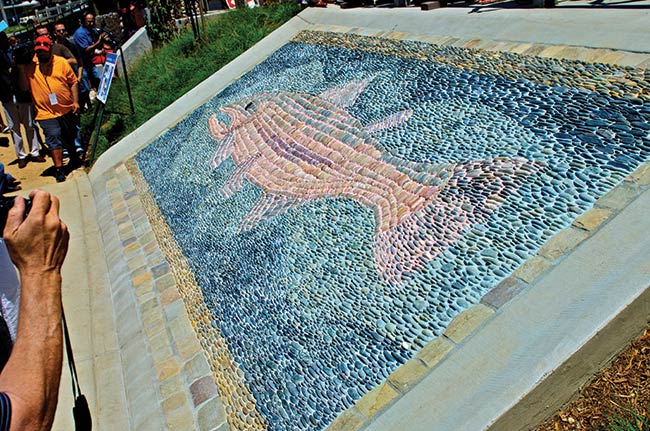
Verdant Spaces
An ambitious, citywide project to reclaim and revitalize the LA River takes shape in the Valley.
-
CategoryUncategorized
-
Written byPauline Adamek
Urban areas all over the world are reclaiming their rivers, creating picturesque, environmentally sound recreational areas. And the Valley is no exception, as evidenced by the mile-long Los Angeles River North Valleyheart Riverwalk project.
The recreational trail (a half-mile on each bank) opened this summer, linking Fulton and Coldwater Canyon avenues. The corridor, previously an unsightly area used by county maintenance, has been transformed into a gorgeous greenway for joggers and bicyclists.
 The Village Gardeners, based in Sherman Oaks, conceived the project back in 2008, and in what president Rick Rabins describes as “a unique partnership,” the county gave the thumbs-up that same year—ultimately paying the $3.6 million price tag. Volunteers with the nonprofit will maintain the greenway.
The Village Gardeners, based in Sherman Oaks, conceived the project back in 2008, and in what president Rick Rabins describes as “a unique partnership,” the county gave the thumbs-up that same year—ultimately paying the $3.6 million price tag. Volunteers with the nonprofit will maintain the greenway.
Landscaping is a large part of the area’s appeal. Diseased oleander bushes have been replaced by terraced, drought-friendly California natives. Gently sloping ramps offer easy pedestrian and stroller access, and there are several benches and environmentally educational signs.
The Valleyheart project is consistent with the Los Angeles River Master Plan, with its goal of creating one continuous greenway. Beginning in Canoga Park, the LA River snakes its way through the San Fernando Valley, flowing all the way down to Long Beach. If the goal is achieved, one day there will be a 51-mile greenway spanning from the mountains to the ocean.
The new greenway in Sherman Oaks is a smaller version of the five-acre park recently completed at the headwater in Canoga Park, which added 2½ miles of trails. That project cost the county $11.5 million. A $4.6 million garden path south of the river, between Mason and Winnetka avenues, is slated to open in late summer.
Strolling the Sherman Oaks greenway, Rick Rabins voices his pleasure. “It’s quite a spectacular transformation from what it was beforehand,” he says. “They stabilized the slope with retaining walls made from natural river stones and recycled concrete—called gabion—to mitigate erosion. And the planting of native flora encourages bird nesting habitats.”
Indeed, now egrets, herons and even birds of prey such as ospreys flock to the cleaned-up preserve, feasting on small schools of tilapia and carp darting about the shallows.











